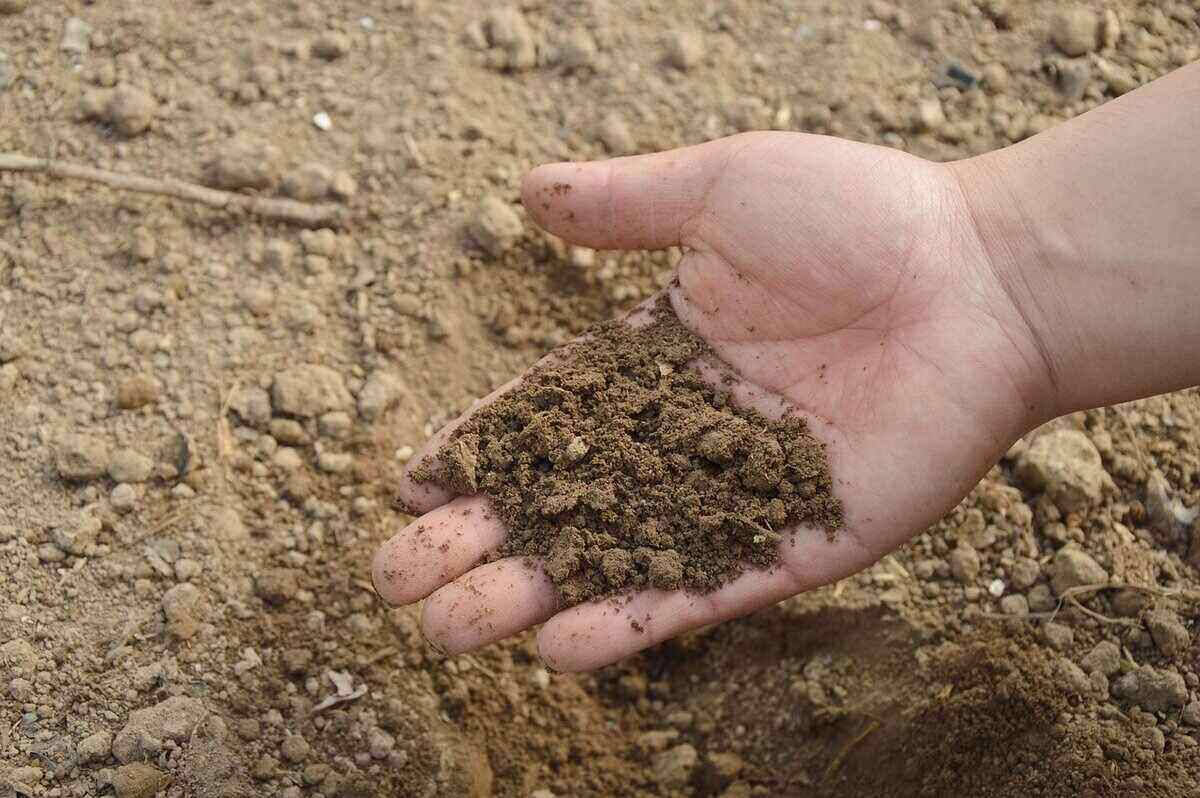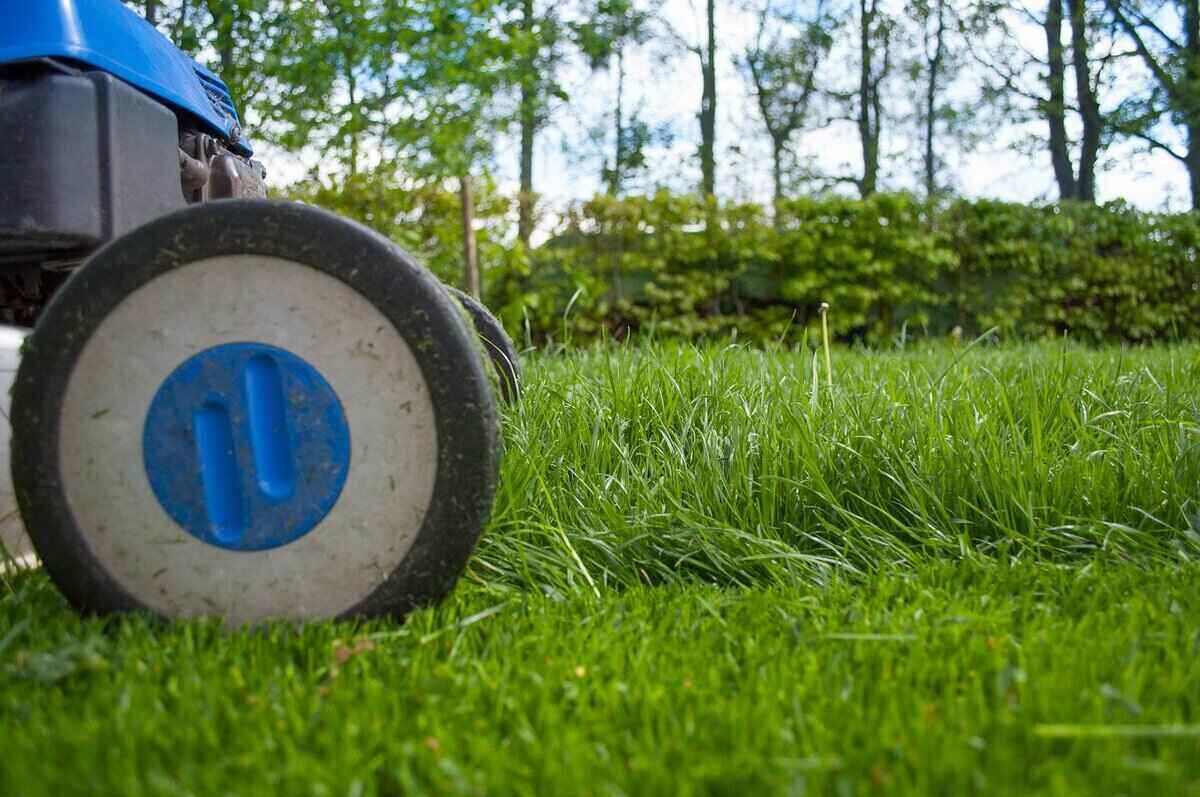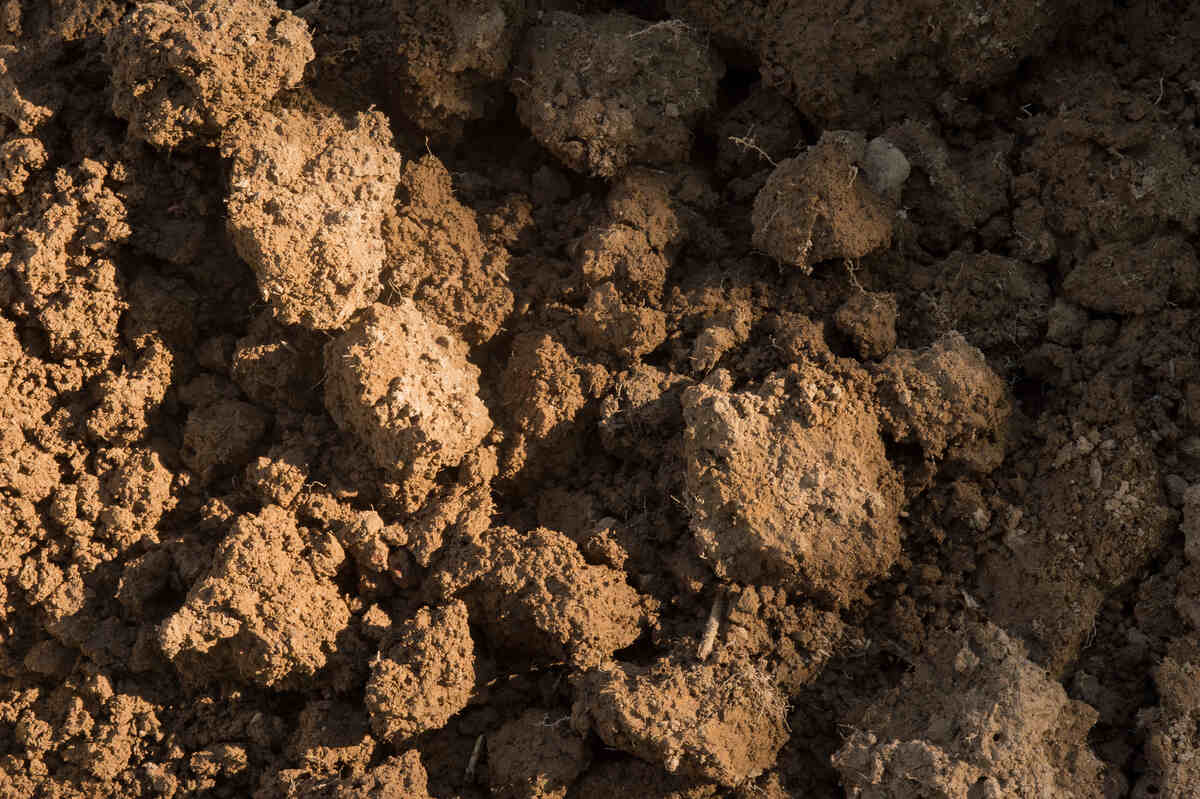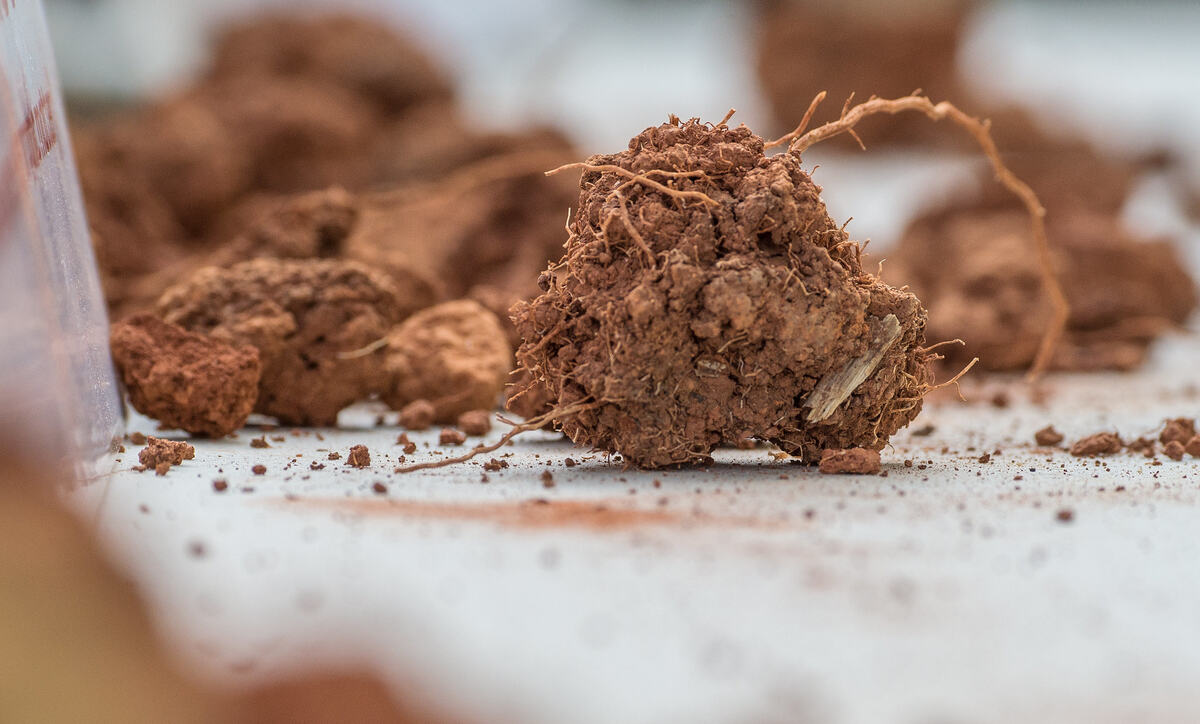
Planting on wet soil and over-tilling can cause soil compaction, but so do foot traffic, heavy equipment and a clay soil you’re trying to amend with sand.
We discuss the main causes of compacted soil so you can identify them easily and avoid further damage to your lawn and garden.
What is Compacted Soil?
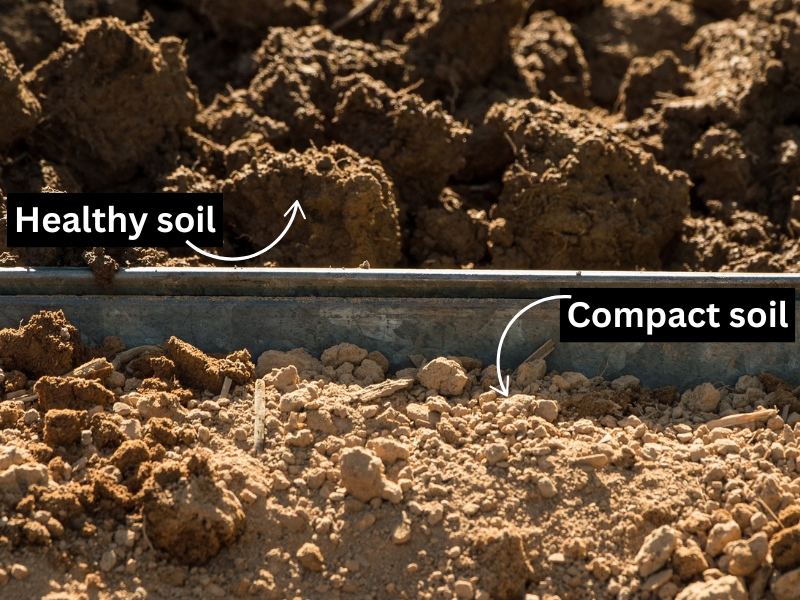
Compaction happens when a force presses the soil particles together, squeezing out the air and water and breaking most of the pores.
As a result, compacted soil is dense, heavy, and has a low capacity to absorb and drain water. It’s slow to move nutrients toward plant roots and it has a hard texture that prevents roots from growing.
Why does your lawn or garden have compacted soil? Here are seven leading causes to consider.
7 Causes of Compacted Soil
1. Over-Tilling
Does your soil resemble an alligator’s skin? You may have tilled it too much.
Healthy, loose soil is made of tiny clumps, called aggregates, that organic matter keeps together, acting as a binder.
Tillage breaks this binder. The clumps fall apart and what was porous, sponge-like soil turns into a powder of fine particles, very easily compacted.
Heavy rain often compresses these fine soil particles into a hard crust that prevents seed germination and makes seedling emergence harder. This crust is rigid and cracks, looking like alligator skin.
2. Aerating, Digging or Tilling Too-Wet Soil
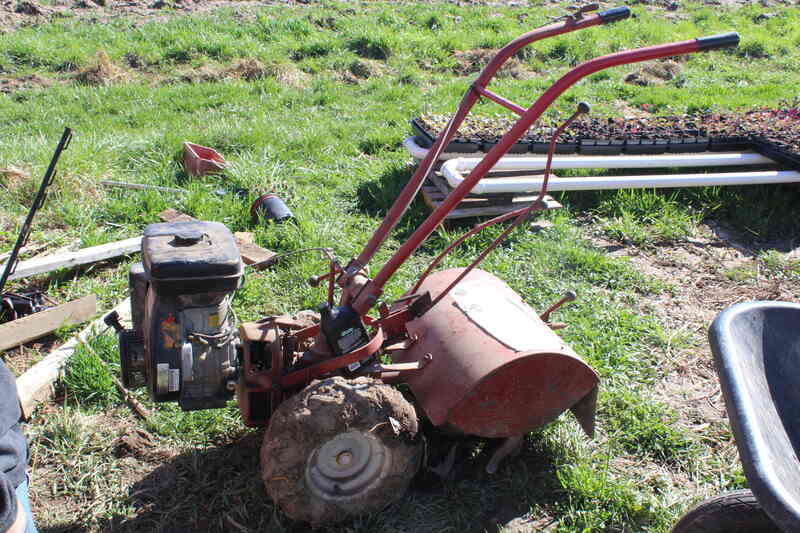
Water that fills the pores in wet soil works like a lubricant. It makes it easier for soil particles to slide against each other and be compacted when you dig or till the soil.
“The potential for soil compaction is at its highest when the soil is just dry enough to work without getting stuck.” said Professor Mahdi Al-Kaisi from Iowa State University.
He recommends testing the soil moisture by pushing a ribbon of dirt between the thumb and index finger. If it breaks off within 1 or 2 inches, the risk of compaction is low, but if the ribbon stretches out to 4 or 5 inches, the soil is still too wet and plastic.
Give the soil time to lose the extra moisture to prevent compaction. “A half-day’s wait can pay off in the long run,” Al-Kaisi said.
3. Foot Traffic
If your compacted soil looks like a strip of bare ground that crosses the lawn, there’s a good chance foot traffic caused it.
Walking repeatedly on the same path damages the grass and squeezes the air between the soil particles, compacting it. So do running and jumping.
Studies show foot traffic can increase soil compaction by up to 50%, and even low activity levels can affect the soil structure. Foot traffic can compact the ground in kids’ play areas, places where dogs travel the same path, and in entertainment areas.
To avoid lanes of compacted soil on your lawn, redirect the traffic to existing walkways by installing fences and planting shrubs.
4. Heavy Equipment
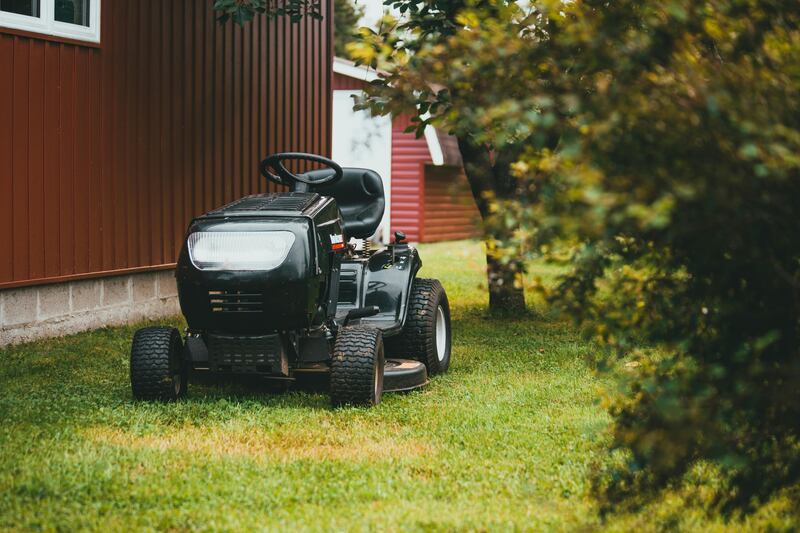
The heavier the equipment crossing your lawn, the deeper and heavier the compaction.
A riding mower weighs, on average, between 400 and 600 pounds (not taking into account the weight of the person driving it). There’s a good chance mowing weekly might cause some soil compaction.
To avoid compacting the soil, keep hefty equipment off the lawn and use a lightweight mower (robotic mowers weigh only 20 to 30 pounds, and electric mowers 40 to 100 pounds).
Lawn care equipment typically compacts the first few inches of the upper soil. If your shovel hits a hardpan deeper under the surface, that might be caused by heavier construction equipment like excavators or wheel loaders. It often happens in the yards of newly built houses or after renovation projects.
To prevent deep compaction, also avoid driving or parking your car on the turfgrass even if you’re tempted to shade it under a tree during summer. The average car weighs 2,500 to 4,000 pounds and can severly compact the soil on your lawn.
5. Soil Rich in Clay
Does your lawn have clay soil or silt clay soil? Compaction is a constant problem in these soil types.
Some soils are more prone to compaction than others. Clay and silt-clay have tiny, smooth particles with fewer, smaller pores in between. Their fine particles stick together easier, making these soil types more prone to compaction.
By comparison, sandy soil has bigger, coarser particles and larger, more rigid pores. The rough sandy particles are harder to press together.
If you have clay or silt-clay soil, amend it periodically with organic matter to improve its texture and reduce compaction.
6. A Mix of Clay and Sand Soil
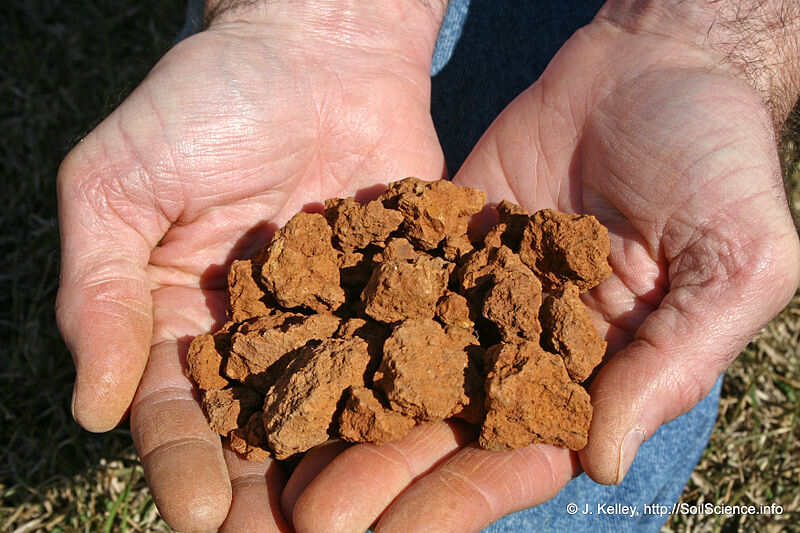
Adding sand into clay soil can create a compact mass as tough as concrete.
When sand and clay mix, clay acts as a ‘glue’ sticking all particles together, explains Amanda McWhirt, extension specialist at the University of Arkansas.
“Similar to how cement will bind particles of gravel to create concrete, clay soil can bind with added sand particles to create a more dense soil.”
Instead, loosen the soil by adding organic matter such as compost or peat moss.
7. Heavy Rain
Raindrops can compact the soil surface, and so can water ponding on your lawn after heavy rain.
If you’ve ever been caught outside in heavy rain without an umbrella, you probably remember the large raindrops feeling like tens of fingers hitting your skin. All that water falling with speed compacts the soil, especially if the soil is bare and rich in clay.
Stormwater puddles also add to the damage. Where rainfall ponds, its weight presses the soil particles, further compressing the ground.
Keep Compaction Away
Soil compaction is often caused by a combination of factors hard to identify. To ensure your turfgrass grows on healthy, loose soil have your soil checked and treated by professionals. Find a lawn care pro with LawnStarter and enjoy a thick, spotless lawn!
Sources:
- Al-Kaisi, M. (2001, June 11). Wet soils vulnerable to compaction. IC-486(13), pg. 106-107. Iowa State University. https://crops.extension.iastate.edu/encyclopedia/wet-soils-vulnerable-compaction
- Moonilall, N. I. (2019, July 15). What are soil aggregates? Soils Matter, Get the Scoop! Soil Science Society of America (SSSA). https://soilsmatter.wordpress.com/2019/07/15/what-are-soil-aggregates/
- McWhirt, A. (2021, January 19). Will adding sand help my clay soil? University of Arkansas. https://www.uaex.uada.edu/farm-ranch/crops-commercial-horticulture/horticulture/ar-fruit-veg-nut-update-blog/posts/adding-sand-to-soil.aspx
Main Photo Credit: Healthy soil (center) is seen with dry compacted soil, U.S. Department of Agriculture / Flickr


